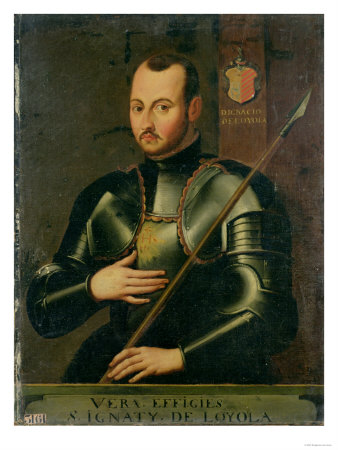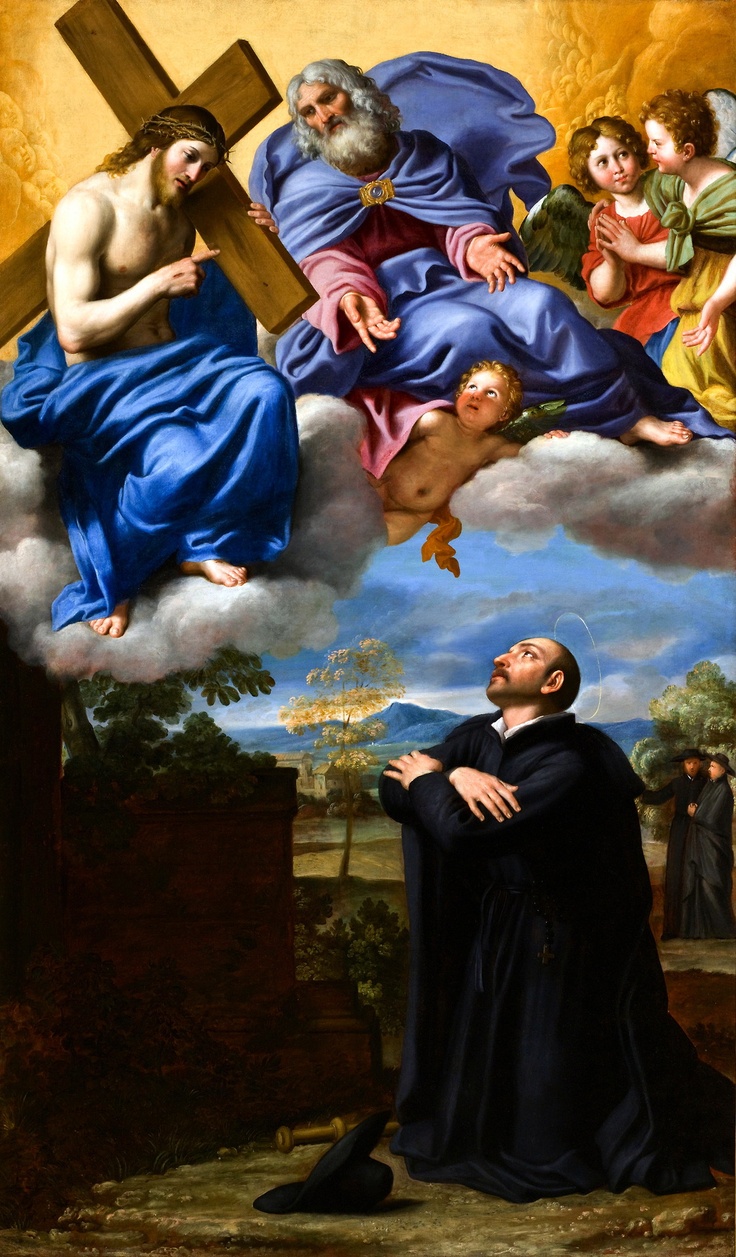July 31st: Saint Ignatius of Loyola, SJ
Founder of The Society of Jesus (Jesuits)
Born : December 2, 1870
Died : July 29, 1936
 St Ignatius of Loyola, the founder of the Society of Jesus, was born of noble family in the Basque province of Spain. He was the youngest of thirteen children. At fifteen he served as a court page to King Ferdinand’s Minister of Finance and later joined the service of the Duke of Najera. He was seriously wounded by a cannonball whilst defending Spain against French invaders in Pamplona.
St Ignatius of Loyola, the founder of the Society of Jesus, was born of noble family in the Basque province of Spain. He was the youngest of thirteen children. At fifteen he served as a court page to King Ferdinand’s Minister of Finance and later joined the service of the Duke of Najera. He was seriously wounded by a cannonball whilst defending Spain against French invaders in Pamplona.
The stray cannon shot broke his right leg and wounded the other. When his wound refused to heal, his physician told him to prepare for death, but he miraculously recovered. While convalescing at his ancestral home, he read the only two books available in the castle: “Life of Christ” and “Lives of Saints” This was the most important reading that Ignatius ever did as they helped him reflect and to question his former way of life and he asked himself, “Why cannot I walk the same paths as the saints?” He was totally transformed and was determined to follow the path of the saints after Our Lady with the Child Jesus appeared to him.
When his leg was sufficiently healed, he went on a pilgrimage to Jerusalem. En route he stopped at Montserrat on the eve of Our Lady’s Annunciation. He gave his robes to a beggar and clothed himself in his sackcloth tunic.
He stopped to spend a few days at Manresa, but stayed on for ten months, for it was there that God began to train him in his spiritual life. Ignatius spent several hours each day in prayer and just as many hours helping at a nearby hospice.
Ignatius, a pilgrim amongst pilgrims, first saw Jerusalem 19 months after he left home. He prayed in the Garden of Olives, in the Holy Sepulcher, the Mount of the Ascension, and also visited Bethlehem. He would have liked to remain in the Holy Land but was dissuaded by the Franciscan Superior, custodian of the holy places. By now, Ignatius’ only desire was to help souls, so he was determined to study for the priesthood. At 33, he began to study Latin at Barcelona and later, university studies. When not studying, Ignatius spent time in prayer, penance and begging. He also spoke to students and adults about prayer and the meaning of the gospels and God’s commandments. Some who did not accept his good work brought his preaching to the attention of the Inquisition and in 1527 he was imprisoned for 42 days.
Ignatius then went to Salamanca but left for Paris after he was imprisoned for 22 days because he was suspected of heresy for preaching in the streets. During his 7 years in Paris, he pursued his studies and obtained a Masters in Arts in 1537. In Paris he befriended Peter Favre, Francis Xavier and 5 other companions who later became his first recruits and he directed each of them through the spiritual exercises. They took their vows in Montmartre on the Feast of Our Lady’s Assumption In 1534.
The group met Pope Paul III to seek papal permission for their pilgrimage to Jerusalem and ordination for the non-priests among them. The Pope was so impressed with the group that he not only granted permission for their pilgrimage and ordination but also gave them money for their passage to Jerusalem. Their pilgrimage to Jerusalem however did not materialize because of the war with the Turks. The group then broke up into smaller groups and went to several northern Italian cities for 40 days in prayer. The days in Vicenza for Ignatius were as spiritually rich as those in Manresa for God granted him innumerable interior consolations and spiritual visions.
 On their way to Rome in 1537, they visited a small chapel in La Storta where Ignatius was comforted by a vision of God the Father in which He told him, Father said to Son, carrying the cross: “I desire that you take this man for a companion.” Son declared: “It is my will that you serve us.”
On their way to Rome in 1537, they visited a small chapel in La Storta where Ignatius was comforted by a vision of God the Father in which He told him, Father said to Son, carrying the cross: “I desire that you take this man for a companion.” Son declared: “It is my will that you serve us.”
Son assured Ignatius: “I will be favorable to you in Rome”.
Fr Ignatius offered his first Mass which he had long postponed, on Christmas Eve, 1538 at the Church of St Mary Major. Their work prospered in Rome and other Italian cities, and they now abandoned plans for the Holy Land.
The group unanimously agreed to form a new Order which was approved by the Pope and Ignatius was unanimously elected as the Superior. He guided the Society for 15 years during which time he wrote its Constitutions, interviewed candidates for the Society and directed them through the spiritual exercises. The Society did not limit its activities to Rome; it soon had houses in the major Italian cities as well as in Spain, Portugal, France, Germany and the Low Countries. As Jesuit influence increased in these cities, colleges were opened and by 1556, the year when Ignatius died, it totaled 1000 members in 76 houses in 12 provinces that included Brazil, Japan and India.
Ever since his Paris days, Ignatius had suffered from stomach ailments; these were especially troublesome in the last 10 years of his life and his health declined. When news of his death on 31 July 1556 broke, many came to the Jesuit residence and when his body was made ready for visitors, there was a long line of priests and prelates, of Rome’s nobility and of Rome’s poor, all coming to kiss the venerable hands of the founder of the Society of Jesus.
Ignatius of Loyola was buried in the church of Our Lady of the Way and when it was replaced by the church of the Gesu, his remains was interred there in 1587. He was beatified on July 27, 1609 and canonized by Pope Gregory XV on March 12,1622, together with Francis Xavier.
